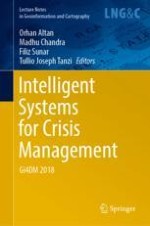In the past several years, there have been significant technological advances in the field of crisis response. However, many aspects concerning the efficient collection and integration of geo-information, applied semantics and situation awareness for disaster management remain open. Improving crisis response systems and making them intelligent requires extensive collaboration between emergency responders, disaster managers, system designers and researchers alike. To facilitate this process, the Gi4DM (GeoInformation for Disaster Management) conferences have been held regularly since 2005. The events are coordinated by the Joint Board of Geospatial Information Societies (JB GIS) and ICSU GeoUnions.
This book presents the outcomes of the Gi4DM 2018 conference, which was organised by the ISPRS-URSI Joint Working Group ICWG III/IVa: Disaster Assessment, Monitoring and Management and held in Istanbul, Turkey on 18-21 March 2018. It includes 12 scientific papers focusing on the intelligent use of geo-information, semantics and situation awareness.
